|
|
Post by Muleskinner on Jan 9, 2012 20:35:14 GMT -8
Thought I would post a few Pics I have found during my research for projects and general history of the industry which I spent most of my years around. There are a few on this Forum who can relate to the photos but for others it will be a journey into the past days which wrote the Establishment of the timber industry in the Pacific Northwest. Enjoy. 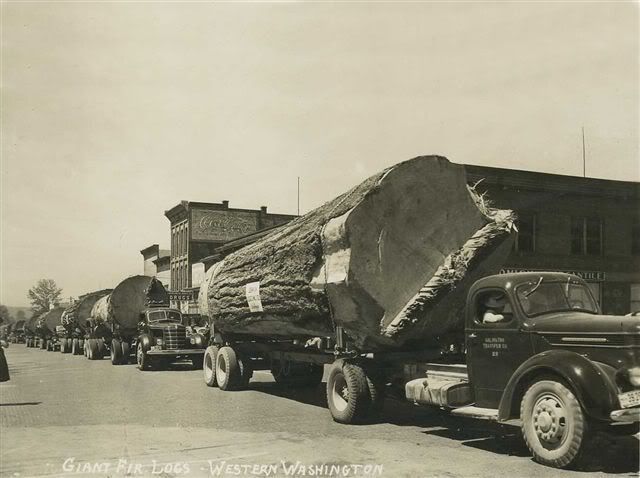 Two complete fir trees bucked and loaded, roading through Port Angeles, Washington. 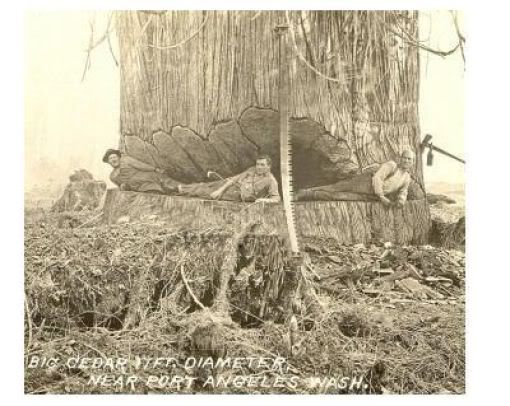 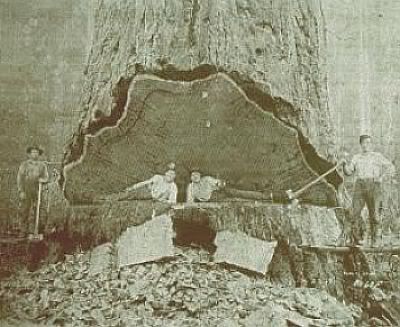 Falling a California Redwood 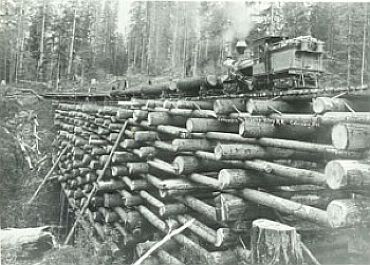 Lokie and turn on the ric in Olympic Forest, Washington. 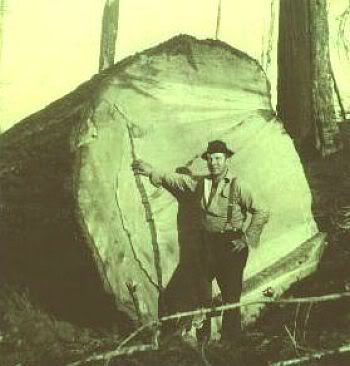 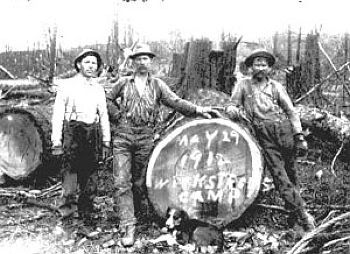 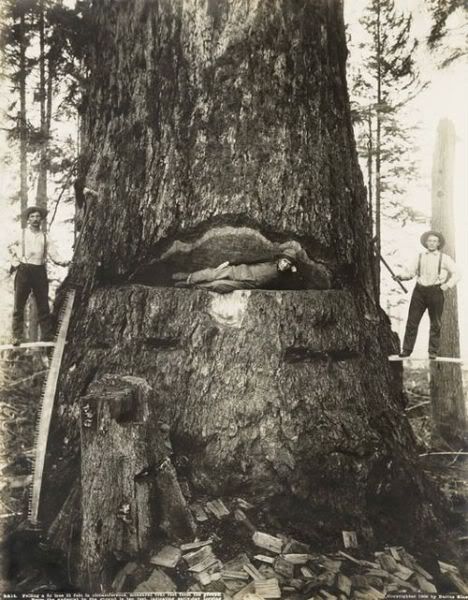 Misery Whips, Spring Boards and falling axes falling a Coastal Douglas Fir near Crescent City, California. 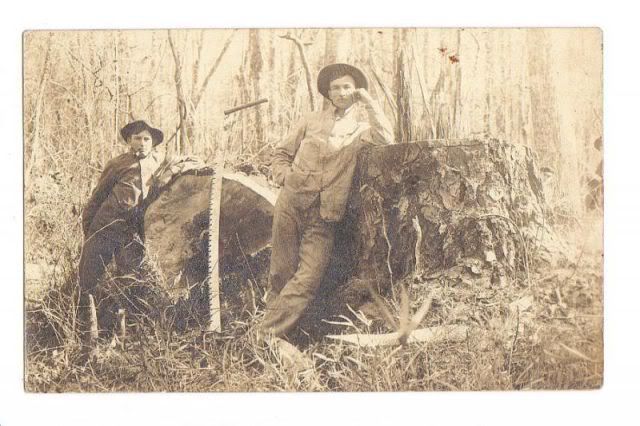 Short Stump Buckers.  Short Stump Buckers.  24' Misery whip for Redwood Falling Humboldt County, California. |
|
|
|
Post by slurrydog on Jan 10, 2012 6:46:53 GMT -8
Great pics.
My grandpa was a faller in and around Mt. St. Helens and cut every thing by hand. He passed away when I was too young to get to know him, would have liked to hear his stories.
Are the trucks International KB models I wonder. I wonder how much weight they are hauling.
Dave
|
|
|
|
Post by gator on Jan 10, 2012 10:34:58 GMT -8
Now those are some really cool pictures. I have a hard time trying to imagine what it was like back then. It must have taken quite a while to fall one of those big trees!
Be Well
Gator
|
|
|
|
Post by Muleskinner on Jan 10, 2012 11:03:39 GMT -8
Marc
Some of these trees took two to three days to fall and another couple of days to limb and buck into length for transport. If they were to large in diameter they had to be either Quarter cut or halved after being cut to length. On a lot of sites the fallers would work in teams of four working in shifts. The morning crew would start the cut and an evening crew would continue to dark, chopping the under cut. The tree was then left to the misery whippers to come in the next day back cut and fall the tree. The under cutters would already be working on the next unit for falling.
In the Sierra Nevada's where the Larger inland Redwoods stood they were so big, the loggers would go through with a boring machine and bore holes through and all the way around the stump at about ten inch intervals and thus weakening the stump. They would then leave the tree and let the high winds of the Sierra Nevada winters take them down. Once this was done and the tree was on the ground, they would send in the powder monkeys who would bore down through the log at intervals and pack stunping powder in the holes and when setting it off the explosion would split the trees down. They would do this again and again until the pieces were down to the size which the misery whippers could come in and Buck them down to transportable size. An interesting note here is that one sequoia redwood has enough wood in it to build ten or more reasonable size houses not to mention furniture and What not to put into them. These houses would last for centuries because redwood is immune to rot and decay. The bark did not go to waste either as it was used in some areas for insulation between the walls against the wild winters of the Sierra areas. . Another interesting note on the Redwoods is the bark of the Redwood tree does not burn and if there is a fire among these groves it has to get to the upper branches to do any damage to the tree itself, which if anything is minimal damage at that. That's why they have been here since the dawn of time and grow to the age of many hundreds of years.
Dave
Its hard to say what they were at weigh in as there was no control in that area back then. What ever you could stack on the bunks and not break down the rig was legal. From the looks of these logs by today's standards, they would be considered off hi way loads in some areas. In California, they would have been most likely quartered and halved for transport. As for the rigs I believe they are KB models but that's just from my observation.
|
|
|
|
Post by Ryan Rønning on Jan 10, 2012 18:46:05 GMT -8
Great pics!
|
|
|
|
Post by gator on Jan 12, 2012 8:16:14 GMT -8
Bill,
Thanks for that info. I kinda thought that they were a lot of work to bring down!
Be Well
Gator
|
|
|
|
Post by tufftin on Jan 13, 2012 9:32:04 GMT -8
|
|
|
|
Post by Muleskinner on Jan 13, 2012 11:52:36 GMT -8
Cool song there Mike. I remember it when Marvin Rainwater the blind country singer did it. Had the record for so many years now I don't know what ever became of it. From what I understand about the song it was written by a rigger here in Oregon about the Logging way back in the twenties or thirties and Marvin Rainwater liked it and recorded it on Sun Records out of Nashville. It became a big hit for him back in the early years of Country music. Not bad for a guy who was totaly blind since birth and tought himself to play guitar and having never been able to see a logging crew or site in action. but only hear the sounds.
|
|
|
|
Post by Muleskinner on Jan 13, 2012 12:03:14 GMT -8
|
|
|
|
Post by tufftin on Jan 13, 2012 14:29:46 GMT -8
Well.................. the blind song writer/singer was Buzz Marten and he was born in Coon Holler, Oregon in the 20's and went blind at the age of 13. He has 20 or more songs to his credit like "Used Log Trunk" and one about "Whistle Punks" and many more. I had the priviledge of seeing him in the 60's and I believe that he was from the Albany, OR area then but he traveled to logging shows in the country advertising his songs. Here's a site with his song titles................................ www.cdbaby.com/cd/buzzmartin |
|
|
|
Post by Muleskinner on Jan 13, 2012 23:11:48 GMT -8
Billy McCoy up in Eugene does a lot of his songs also. He was a regular at the four corner Tavern in North Eugene. I saw him in Port Orford and got one of his albums from him and they are good songs but not as good as the originals. Oh by the way Marvin Rainwater did those songs also and I remember Buzz Martin as I seen him in Arcata, Cal at Humboldt state University when I was going there for Art Classes for my degree.
I've heard the name Coon Holler before here in Oregon and never paid that much attension to it. Might make a check and see where it is or was.
|
|
|
|
Post by tufftin on Jan 14, 2012 7:21:40 GMT -8
I Googled "Coon Holler, Oregon" and it came up with Buzz Marten facts.
Mike
|
|
|
|
Post by slurrydog on Jan 14, 2012 9:09:16 GMT -8
Mike, where is Coon Holler? I lived in Oregon all my life and never heard of it, just wondering what part of Oregon it is in. [ my map is in my pickup and to lazy to go get it  ] Dave |
|
|
|
Post by tufftin on Jan 14, 2012 14:59:29 GMT -8
Dave; Just like I said above.................... I Googled it and it came up with facts on Buzz Marten. I suspect him of being from the Albany area or at least I think he was living there when I saw him in the 60'S.
Mike
|
|